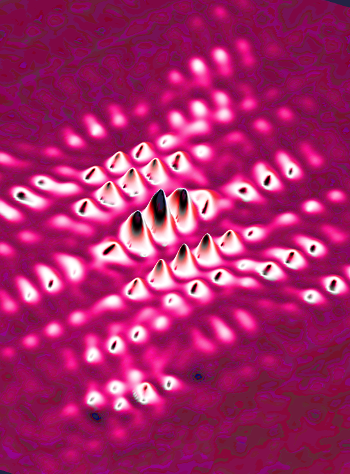Locals advance cutting edge
 New technology could push boundaries in clean tech, healthcare and energy.
New technology could push boundaries in clean tech, healthcare and energy.
Australian researchers have brought the world closer to unlocking the potential of photochemical upconversion in the solid state, paving the way for scalable commercial devices.
Photochemical upconversion involves the conversion of low-energy light particles into high-energy ones, a game-changer for hydrogen catalysis and solar energy.
Now, thanks to UNSW Sydney's Exciton Science researchers, achieving this feat in the solid state is no longer a distant dream.
New findings, published in ACS Energy Letters, promise to revolutionise global research in the transformative field.
Professor Tim Schmidt, an Exciton Science Chief Investigator, hailed the breakthrough: "I think people are going to immediately start copying us. I consider this a breakthrough because this approach can be adapted to upconverting into the ultraviolet or from the infrared. There’s so much we can do with it."
This upconversion process fuses low-energy photons into highly energetic, visible light, ripe for capture by solar cells or other applications.
The magic happens through 'triplet-triplet annihilation,' yielding a 'singlet exciton,' a quasiparticle born when an electron gets excited by light or energy.
Mastering controlled triplet-triplet annihilation and the resultant photochemical upconversion could boost solar energy device efficiency from 33.7 per cent to a dazzling 40 per cent or higher.
Previously, upconversion research primarily involved liquid samples, but for practical applications, it had to shine in a solid state.
Dr Thilini Ishwara, an Exciton Science Research Fellow, and her team crafted a nanostructured alumina film infused with a sensitiser.
The film’s pores housed emitter molecules, delivering a promising photon generation quantum yield of 9.4 per cent.
The next frontier for these researchers is achieving similar results in a fully solid state, potentially using a gel-like substance.
Thilini shared the exciting possibilities: “If you can make it small enough, you could use it for even doing chemistry in the body. You can generate higher energy light at a targeted place inside the body to treat tumours or create medicines with laser precision.”
Beyond healthcare, upconversion holds the key to water purification.
Transforming visible light into harsh UV rays could save millions of lives in the developing world by eradicating harmful pathogens.
But the potential does not stop there. Infrared technology, like night vision, and even 3D printing could be powered by these innovative upconversion techniques.







 Print
Print